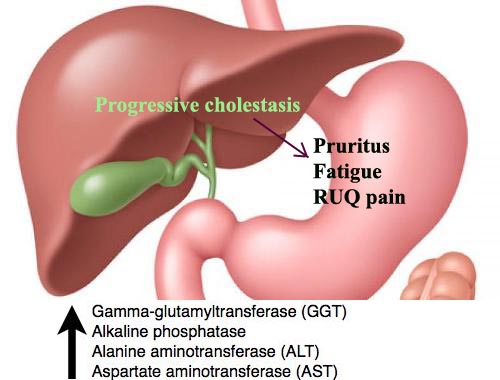Primary Biliary Cirrhosis
Primary biliary cirrhosis is a chronic disease that causes the bile ducts in the liver to become inflamed and damaged and, ultimately, disappear. Bile is a liquid produced in the liver that travels through the bile ducts to the gallbladder and then the small intestine, where it helps digest fats and fat-soluble vitamins A, D, E, and K. When the bile ducts become damaged from chronic inflammation, bile builds up in the liver, injuring liver tissue. The cause of primary biliary cirrhosis is unknown. Most research suggests the disease is an autoimmune condition. The immune system usually protects the body from harmful substances such as bacteria and viruses by attacking and destroying them. In autoimmune diseases, the immune system instead attacks the body's own tissues. In primary biliary cirrhosis, the immune system attacks the bile ducts. Genetic factors may make a person prone to develop primary biliary cirrhosis. Primary biliary cirrhosis is more common in people who have a parent or sibling-particularly an identical twin-with the disease. Genetic factors may also make some people prone to develop other autoimmune diseases. People with primary biliary cirrhosis may have other autoimmune conditions such as rheumatoid arthritis or autoimmune thyroiditis. A person who has genetic factors for primary biliary cirrhosis may be more likely to develop the disease after exposure to chemicals or infections, such as urinary tract infections. The prevalence of primary biliary cirrhosis (PBC) is up to 35-100,000 in US populations, with a distribution that is heavily skewed toward women (10:1 female-to-male distribution) and those over 45 years of age. PBC is progressive in most patients, although in many people the rate of progression can be so slow it may not be clinically relevant. Cirrhosis and its typical complications arise in the end stage.
